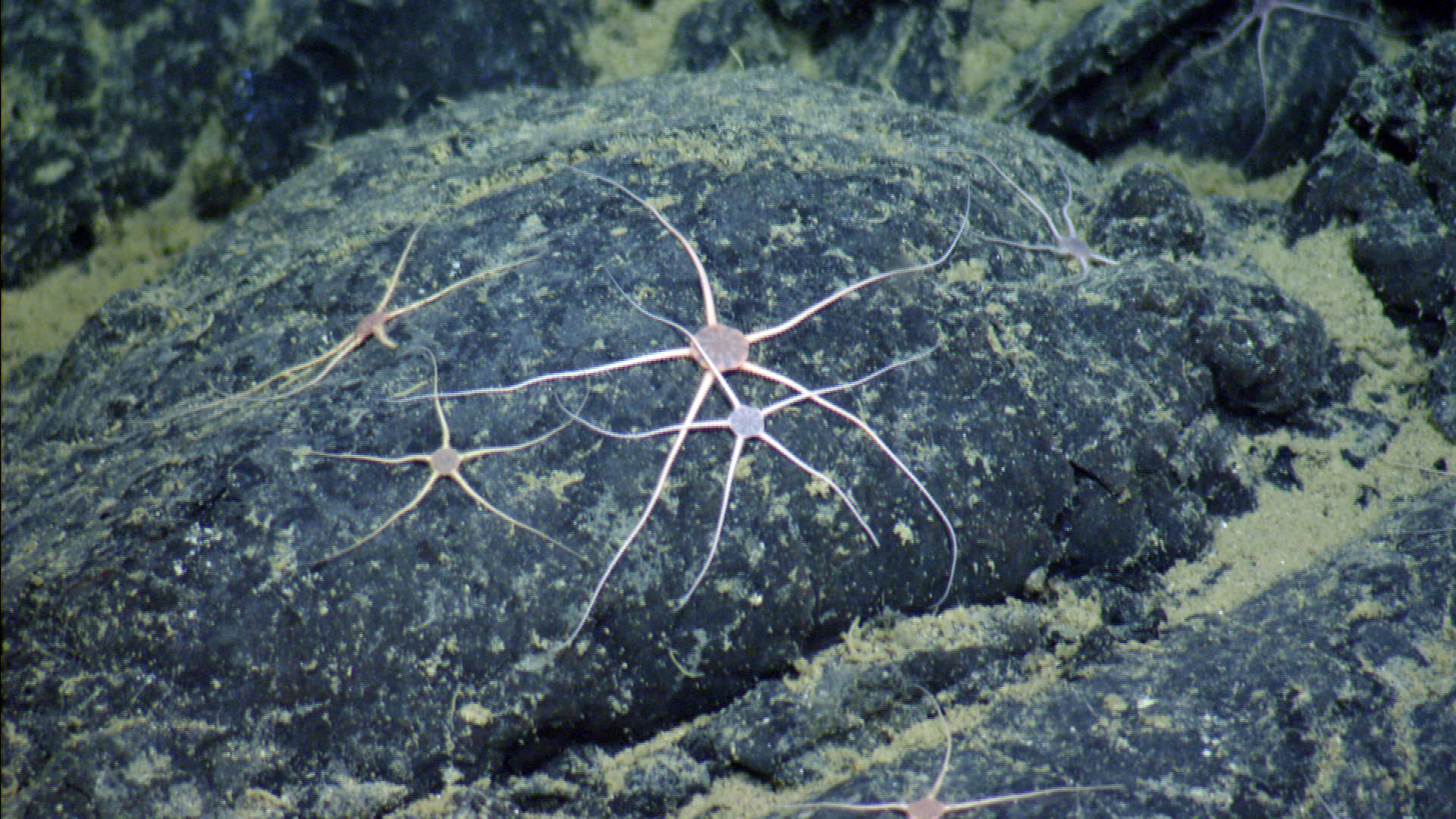Spinophiura Brittle Star (Spinophiura jolliveti)

The lava rocks at Axial Seamount are typically covered with many members of the brittle star species Spinophiura jolliveti. Lacking a common name, we refer to this very abundant species as the Spinophiura Brittle Star. This species has the classic brittle star features described above. All organs are in this main body disk, and the mouth is comprised of 5 toothed jaws on the underside of the disk. The disk has been observed to expand into a cone (see video) when an organism is combative. Specimens commonly charge at each other. The flexible arms are used for locomotion. They move fairly rapidly, because they do not depend on tube feet as does their sister group the sea stars. Instead, brittle stars use their arms to quickly propel themselves along the seafloor. This species’ arms reach up to 60 cm. It is possible that there are other species of brittle star in this region, however identification using photography alone is difficult.
References:
Stöhr, S., O’Hara, T.D., & Thuy, B. 2012. Global diversity of brittle stars (Echinodermata: Ophiuroidea). PLoS ONE 7 (3): e31940. http://www.plosone.org/article/info:doi/10.1371/journal.pone.0031940
Stöhr, S. & Segonzac, M. 2006. Two new genera and species of ophiuroid (Echinodermata) from hydrothermal vents in the East Pacific. Species Diversity 11 (1): 7-32.









